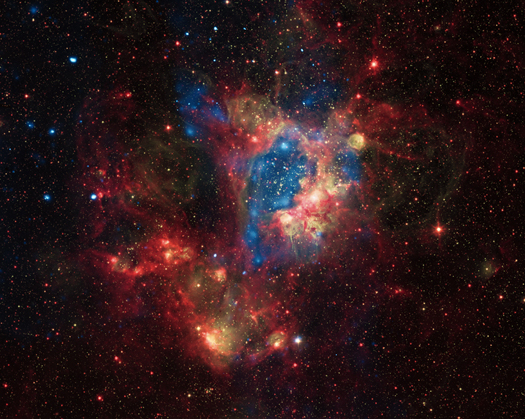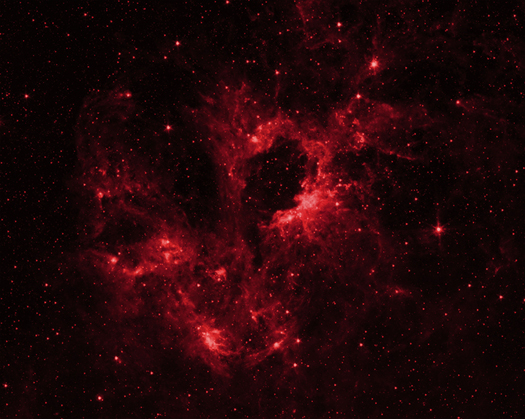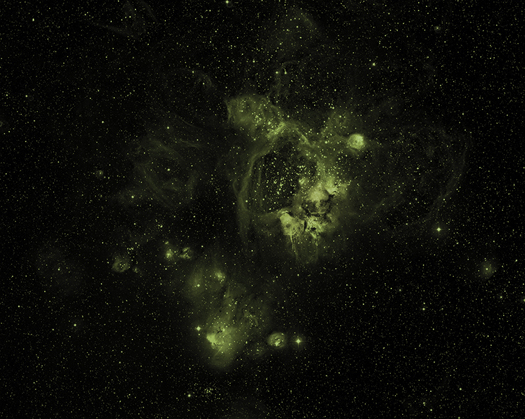

| Visitors Now: | |
| Total Visits: | |
| Total Stories: |

| Story Views | |
| Now: | |
| Last Hour: | |
| Last 24 Hours: | |
| Total: | |
Four Looks At A Surprisingly Bright Superbubble Orbiting The Milky Way

A long-running problem in high-energy astrophysics has been that somesuperbubbles in the LMC, including N44, give off a lot more X-rays than expected from models of their structure. A Chandra study published in 2011 showed that there are two extra sources of the bright X-ray emission: supernova shock waves striking the walls of the cavities, and hot material evaporating from the cavity walls.
Infrared image of NGC 1929

Credit: Chandra X-ray Observatory
The observations show no evidence for an enhancement of elements heavier than hydrogen and helium in the cavities, thus ruling out this possibility as an explanation for the bright X-ray emission. This is the first time that the data have been good enough to distinguish between different sources of the X-rays produced by superbubbles.

The Chandra study of N44 and another superbubble in the LMC was led by Anne Jaskot from the University of Michigan in Ann Arbor. The co-authors were Dave Strickland from Johns Hopkins University in Baltimore, MD, Sally Oey from University of Michigan, You-Hua Chu from University of Illinois and Guillermo Garcia-Segura from Instituto de Astronomia-UNAM in Ensenada, Mexico.
Optical image of NGC 1929

Credit: Chandra X-ray Observatory
NASA’s Marshall Space Flight Center in Huntsville, Ala., manages the Chandra program for NASA’s Science Mission Directorate in Washington. The Smithsonian Astrophysical Observatory controls Chandra’s science and flight operations from Cambridge, Mass.
Contacts and sources:
Megan Watzke
Chandra X-ray Center


